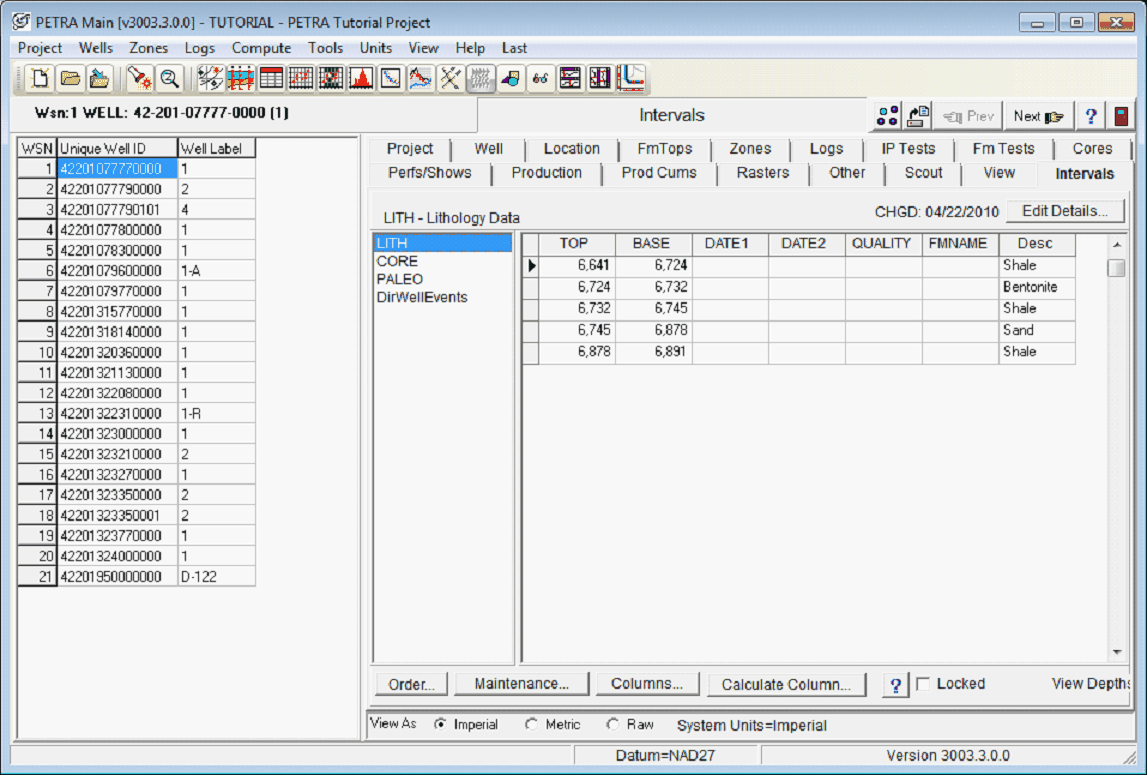Intervals tab |
|
Interval data stores data to a specific depth interval that doesnt fit well with the traditional zone concept, such as data that is too fine (such as core descriptions) or too coarse (such as mud weights or biostratigraphic information) to fit inside two formation tops. Petra stores interval data in tables and fields similar to a spreadsheet. The table stores related interval data in a spreadsheet, where each interval is stored as a separated row. In the example below, the project has the default tables LITH, CORE, and PALEO. Inside the table, each interval is stored as its own row, and information about that interval is stored in fields, or columns in that row. All tables come with a few fields, TOP, BASE, DATE1, DATE2, QUALITY, and FMNAME, but you can add user-defined fields containing numbers, dates, or text. In addition to the standard fields, the LITH table in the example below contains the field Desc which stores lithologic descriptions.
Creating, Modifying and Deleting tables Creating, Modifying and Deleting Fields Changing Interval Attributes, Markers, and Patters Storing Interval Thickness to an Interval Gaps, Overlapping Interval Data, and Bulk Shifts Calculations with Interval Data Setting Default tables and Fields
|
